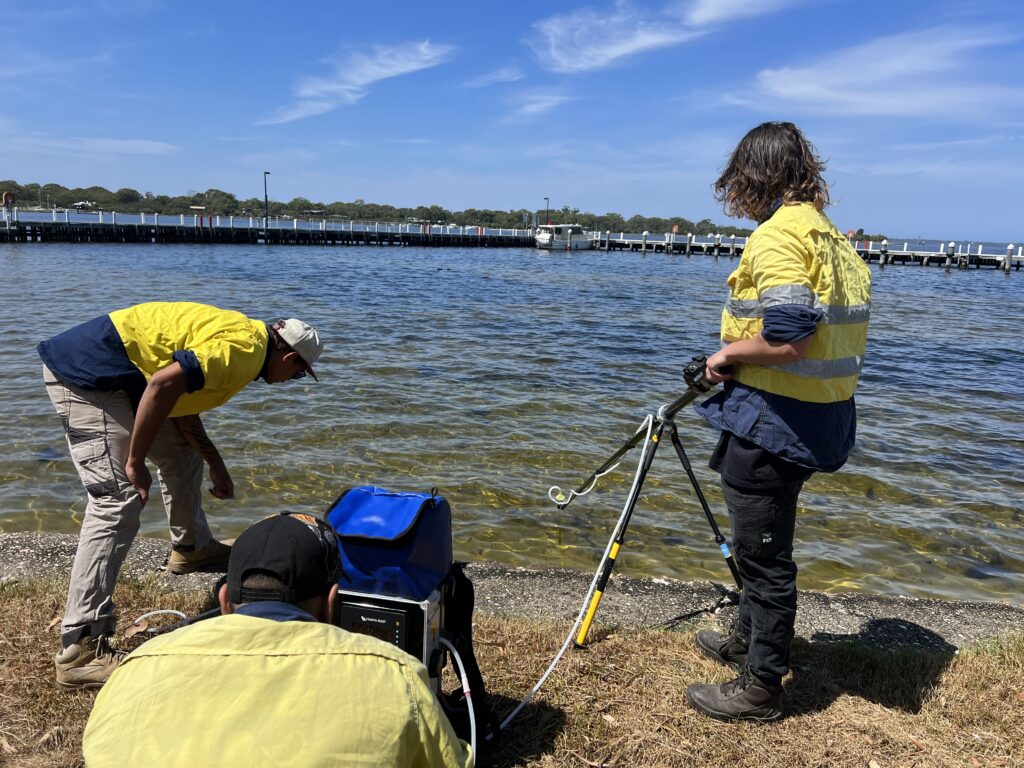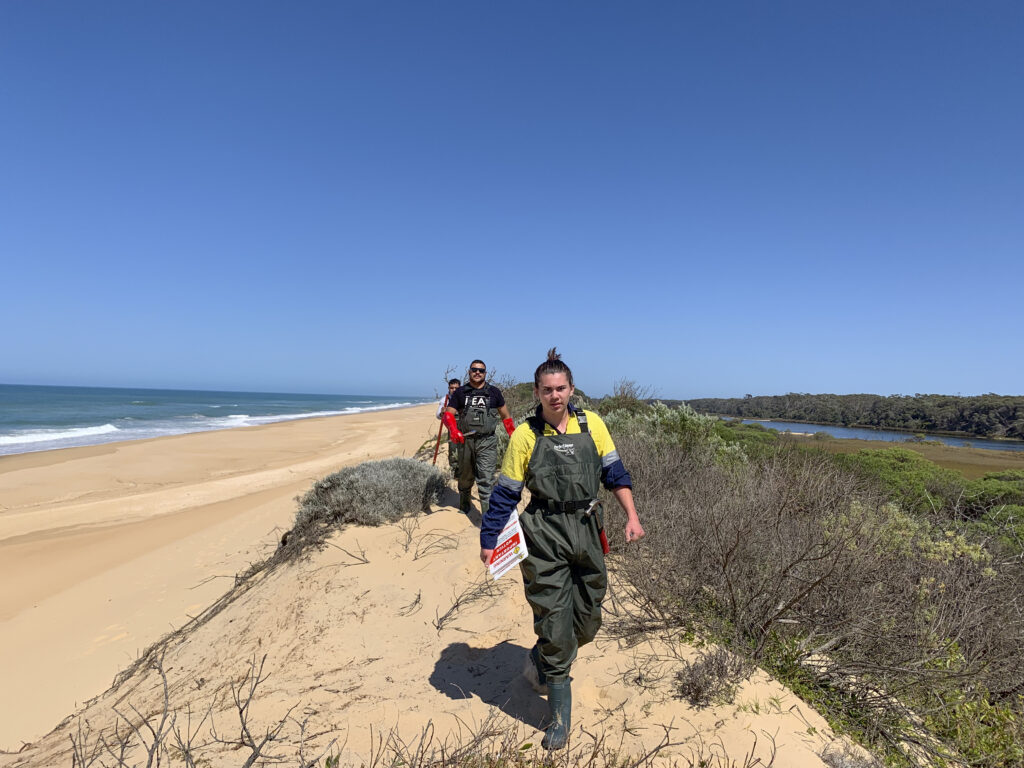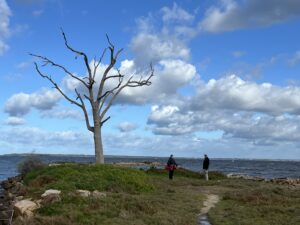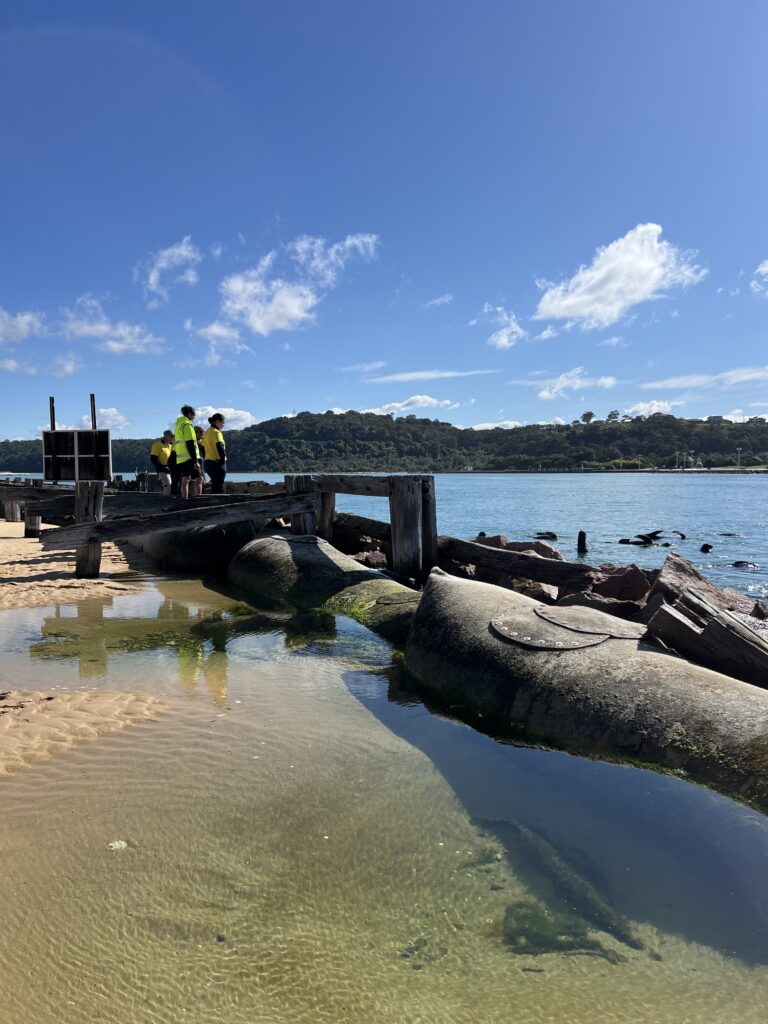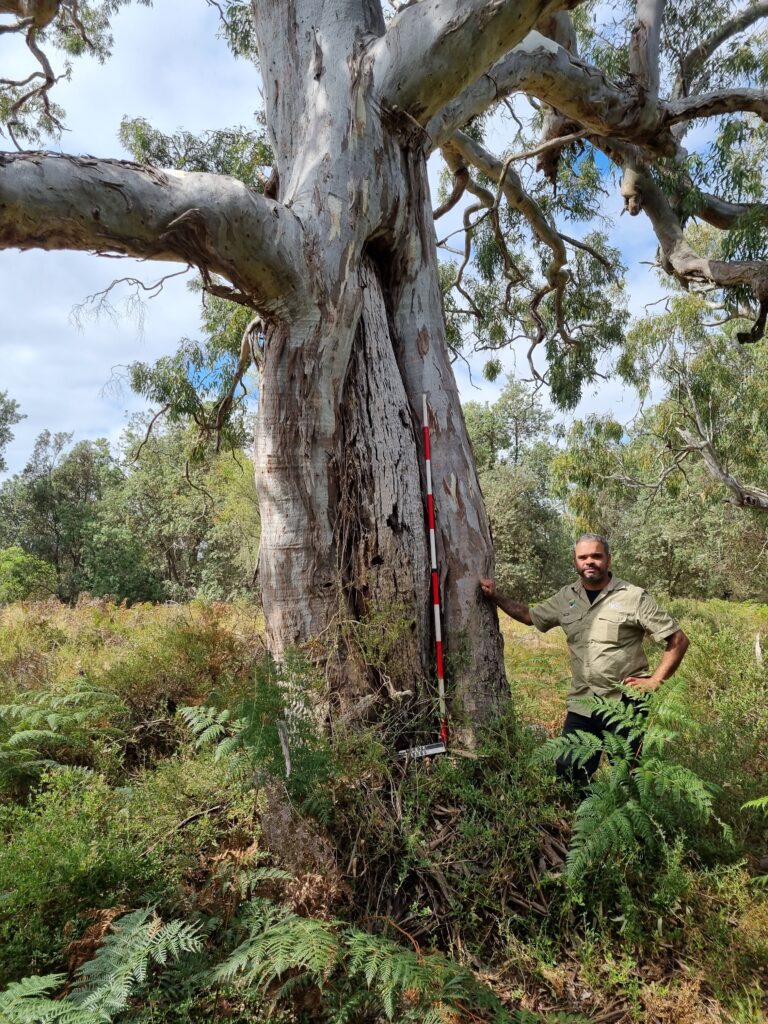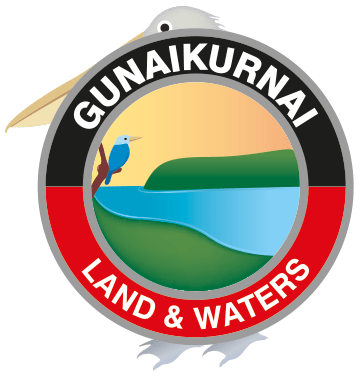Preserving the Past, Protecting the Future
17 January 2025
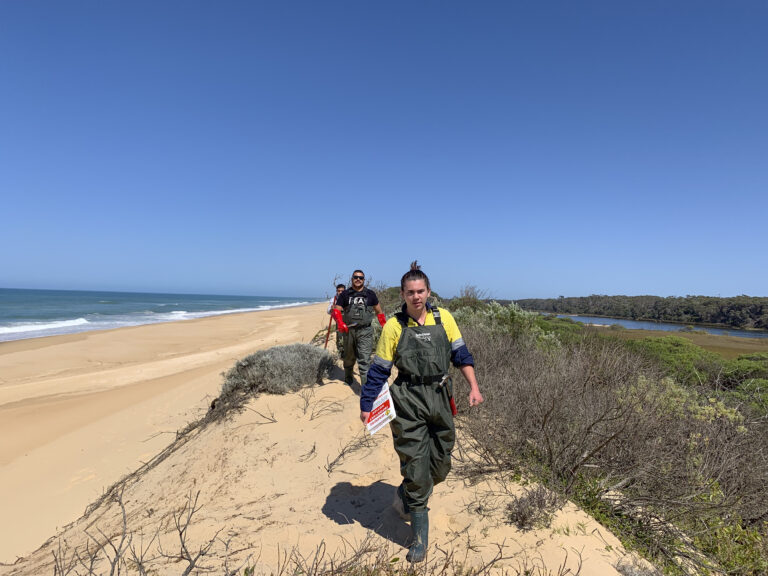
As we begin a new year, we’re reflecting on the significant work undertaken to care for the Gippsland Lakes. Over the past few years, our Natural Resource Management (NRM) team, Joint Management Rangers, RAP crew and the broader Gunaikurnai community have worked together to protect and restore the health of Country.
This work not only safeguards the environment but also strengthens our cultural connection to these landscapes. It’s a journey we embrace with pride, knowing every step helps to preserve the heritage and natural balance of these vital ecosystems for future generations.
Here’s a look at some of the key projects that have shaped this shared commitment:
Protecting Cultural Heritage at the Lower Tambo River
The Lower Tambo River holds profound cultural and ecological significance. However, erosion has posed a significant threat to both biodiversity and cultural heritage. In collaboration with the East Gippsland Catchment Management Authority (EGCMA), our NRM team has undertaken vital restoration work. By establishing native vegetation and using rock stabilisation methods, we have reduced erosion, protected cultural heritage, and supported the area’s natural recovery.
Mapping and Protecting Cultural Values
Rising water levels and climate change continue to expose and threaten cultural heritage sites around the Gippsland Lakes. To address this, our staff worked closely with archaeologists and community members to review registered sites and map new ones as they emerged. This work is vital for preserving Gunaikurnai heritage, allowing us to adapt to changing environmental conditions and continue to protect Country.
Managing Pest Plants and Animals
Invasive species pose an ongoing challenge to the region’s natural balance. Led by Trey Parsons and Corey Jack, our NRM crew and JM Rangers have focused on controlling these threats. Along the 90 Mile Beach, they worked to manage Sea Spurge (Euphorbia paralias), introducing the biological control agent Venturia paralias in collaboration with CSIRO. This innovative approach has reduced the need for chemical treatments, helping to protect native vegetation.
The team also targeted invasive plants like Bridal Creeper, African Box Thorn, Dolichos Pea, and Prickly Pear—species that often escape from gardens and disrupt native ecosystems.
Additionally, fox baiting was conducted across the islands and foreshore of the Gippsland Lakes. Controlling fox numbers is essential to safeguarding nesting birds such as Terns, Hooded Plovers, Swans (Giddi), and Pelicans (Borun) during breeding seasons, ensuring these species can thrive.
Innovating with eDNA Testing
To monitor the health of the Gippsland Lakes waterways, our NRM team adopted eDNA testing, a cutting-edge method that collects environmental DNA to identify species interacting with the ecosystem. This data provides a snapshot of native animal activity and highlights the presence of invasive species such as deer, foxes, and cats. The insights gained from eDNA testing will inform future projects, further supporting efforts to protect and restore the region.
Acknowledging Our Collective Efforts
None of these achievements would have been possible without the dedication of our teams—your family members—whose knowledge, care, and connection these land and waters inspire every project we undertake. Their hard work showcases the strength and pride of Gunaikurnai in caring for Country
As we plan for the next round of funding and projects, we’re committed to building on these successes, deepening our impact, and continuing our collaboration with partners like the East and West Gippsland CMAs and the Love Our Lakes Program. Together, we will want to ensure that the Gippsland Lakes remains a vibrant and healthy ecosystem that honours our the songlines of our Ancestors and our vision for future generations.
